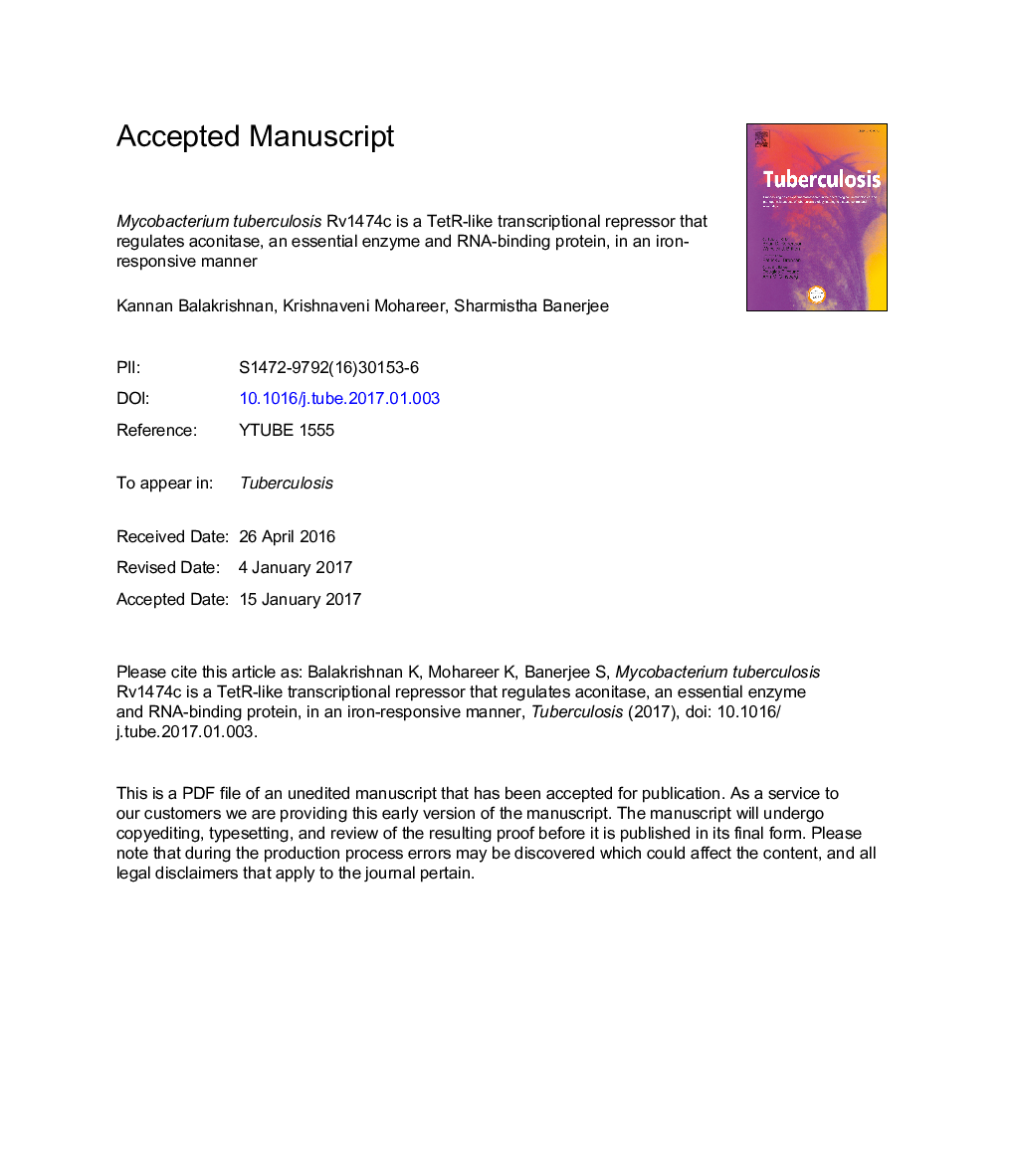| Article ID | Journal | Published Year | Pages | File Type |
|---|---|---|---|---|
| 5536214 | Tuberculosis | 2017 | 39 Pages |
Abstract
Mycobacterium tuberculosis (M.tb), tuberculosis (TB) causing bacteria, employs several mechanisms to maintain iron homeostasis which is critical for its survival and pathogenesis. M.tb aconitase (Acn), a [4Fe-4S] cluster-containing essential protein, apart from participating in energy cycle, also binds to predicted iron-responsive RNA elements. In this study, we identified Rv1474c as a regulator of its operonic partner acn and carried out its biochemical and functional characterization. The binding motif for Rv1474c in the upstream region of acn (Rv1475c)-Rv1474c operon was verified by gel-shift assays. Reporter assays in E. coli followed by over-expression studies in mycobacteria, using both wild type and a DNA-binding defective mutant, demonstrated Rv1474c as a Tet-R like repressor of acn. Rv1474c, besides binding tetracycline, could also bind iron which negatively influenced its DNA binding activity. Further, a consistent decrease in the relative transcript levels of acn when M.tb was grown in iron-deficient conditions as compared to either normal or other stress conditions, indicated regulation of acn by Rv1474c in an iron-responsive manner in vivo. The absence of homologs in the human host and its association with indispensable iron homeostasis makes Rv1474c an attractive target for designing novel anti-mycobacterials.
Related Topics
Life Sciences
Immunology and Microbiology
Applied Microbiology and Biotechnology
Authors
Kannan Balakrishnan, Krishnaveni Mohareer, Sharmistha Banerjee,
